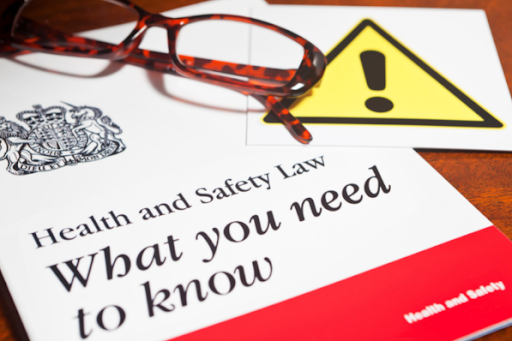The protection of workers, customers, visitors, and contractors from harm should be a priority for every business.
Work related ill-health and accidents in the workplace can result in reputational damage, loss of contracts, and other financial losses that could effectively cripple a business and ruin lives – including your own.
While it’s important to make sales and have money flowing into our business, it’s also imperative to know how and where we could be leaching it too! Have you seen the potential fines for data breaches?!!
If health and safety (or other regulatory compliance matters) is just one of those things you keep putting off because “it’s too expensive”, or “I’m too busy” or “I don’t know where to start”, then (pleeeease) get some help with it before something bad happens!
Do yourself a favour – stop putting it off and get proactive! Trust me on this one, prevention is much better than cure.
It takes a split second for a serious or fatal accident to happen, and the repercussions can last for many years.
So, “who is responsible for the health and safety in your organisation?”
That’s a question I ask all my new clients in our first meeting.
Sitting in the room or on the Zoom call with the Director(s) of companies, nine times out of ten, I get the same answer (bear in mind that where there’s more than one director, they usually look at each other for a second or two first before they reply):
“I am”.
Or “we are” (usually followed by a nervous adjustment to how they’re seated).
And that’s great.
It tells me that they aren’t aware that Health & Safety is EVERYONE’s responsibility.
That said, some people have more responsibilities and accountability than others, and not all H&S duties can be delegated. For example, employers, business owners and/or senior directors would hold more responsibility than their workers as they are the strategic leads and in charge of allocating resources (time, money), and as such will be held accountable for the health, safety, and wellbeing in an organisation.
Health, safety, welfare, wellbeing, etc is too big a task for one or two people to manage.
The Health and Safety Executive (HSE) – Britain’s primary H&S enforcement agency – expects business owners, managers and supervisors, contractors, and staff within a company to share the responsibility.
Responsibilities
Because business owners and employers hold the lion’s share of the workplace H&S responsibilities, they are legally required to keep their employees and anyone who might be affected by what they do (or fail to do) in the course of their business, safe from harm – physical and mental – including customers, visitors, temporary workers and contractors.
In order to meet your responsibilities, there are a few things you need to do:
1. Produce risk assessments and method statements (RAMS) – follow the 5 steps to risk assessments available for free on the HSE website (www.hse.gov.uk) or check out our Risk Management article
2. Create written health and safety policies – if you employ 5 or more people, it’s a legal requirement that this is documented. It’s not just a one-page statement signed off by a director stating “Our policy is not to harm or kill any of our workers or customers in the course of our business activities” (that’s one stage), you also have to say how you’ll carry it through – who, when, how, etc
3. Communicate health and safety information – once you have policies written up and signed off, you need to communicate them across your organisation. If you make any changes, people need to know! It’s not uncommon to find the H&S policy on a noticeboard, an intranet, or a website!
4. Consult your employees about health and safety – there’s a legal requirement that you consult your workers about health and safety issues, and it’s a great opportunity to get their input into RAMS, policies, procedures, and the hazards they face. Find out what’s working for them, and what could be improved.
5. Display the approved Health & Safety poster (or issue personal cards) – this communicates important information such as health and safety responsibilities. It should be easily visible and readable. Many organisations have a H&S noticeboard and H&S poster is usually on the wall next to that.
6. Select suitable contractors – if you have to employ contractors for anything, make sure you have a good selection process and you check they have the relevant competence to carry out the work properly and safely. (Competence is usually a combination of qualifications, skills, and experience.)
7. Provide health and safety training for your workers (including any agency staff) – for people to stay safe and healthy, they need to have some H&S knowledge, and as an employer, you are required to provide H&S training. Contractors would need health and safety information relevant to your workplace, because (if you’ve done your checks properly) it can be assumed that they will be aware of the H&S relevant to their area of expertise. A new starter induction is a great place to start, ToolBox Talks are also helpful.
8. Provide the necessary Personal Protective Equipment (PPE) – as you’ve been completing your risk assessments you’ll have worked your way through the ‘Hierarchy of Control’ and landed on PPE. As an employer, it’s your responsibility to provide the necessary safety equipment such as first aid boxes, eye wash vials, fire extinguishers, and PPE – usually determined by the risk assessments. Be advised though, you’re not allowed to charge your workers for any H&S equipment!
9. Have access to competent H&S advice – if you operate a low-risk business like an office or a call centre, there’s a good chance you’ll be able to manage the majority of it yourself. That said, I’d recommend going on a Managing Safely course. If your business manufactures, stores or transports dangerous goods, then it could well be worth hiring in a competent H&S consultant as a one-off check to make sure you’ve got everything covered, or have them on a retainer so they’re there if you have any questions, queries or problems.
The thing is, you don’t know what you don’t know, and that’s why you need access to a competent risk specialist. It’s far better to be prepared.
If you have any H&S concerns or questions, or feel like you’d benefit from some friendly, knowledgeable support, you’re invited to a free 30-minute chat.

